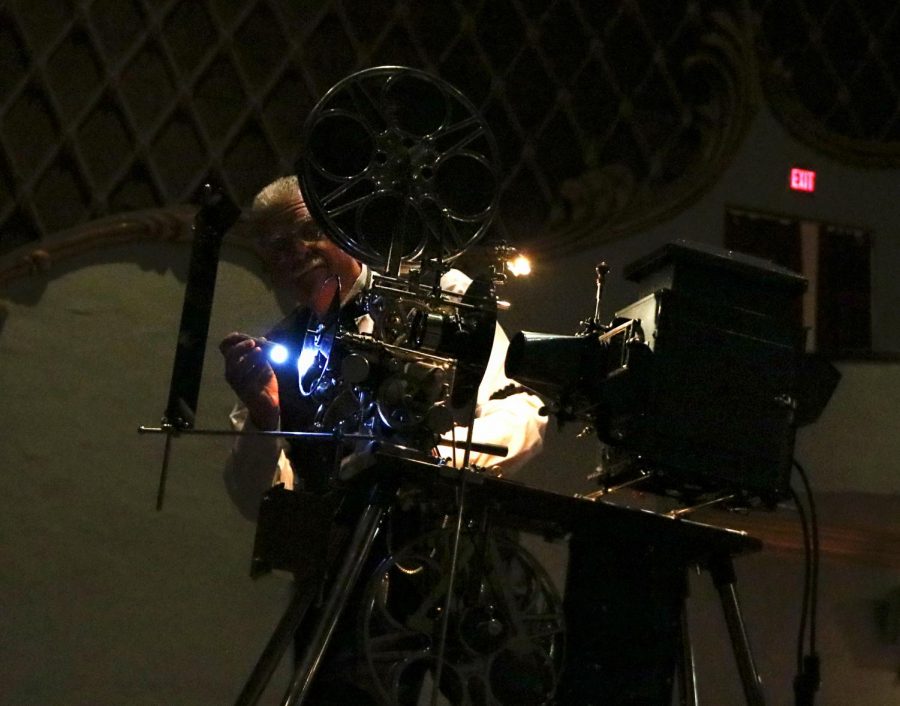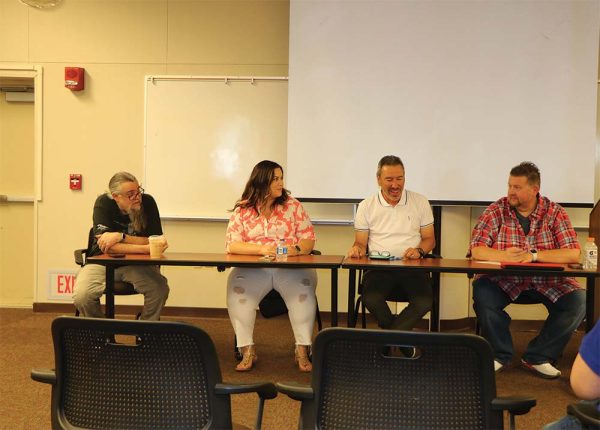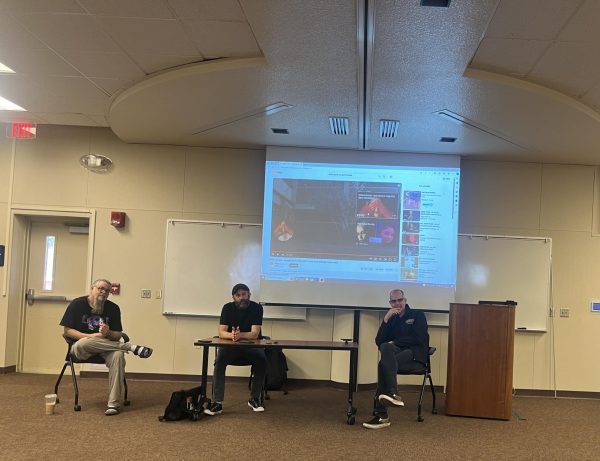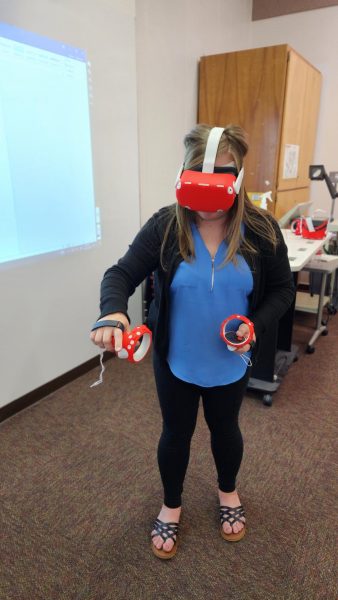Theater plays silent film with live music
Joe Rinaudo inspects his 1909 Powers Cameragraph at ‘The Phantom of the Opera.’
November 1, 2017
The Fox Theater held a special screening of the original 1925 silent version of “The Phantom of the Opera” for one day only on Oct. 22. The film featured an authentic, fully restored 1909 hand-cranked projector and live organ music, and allowed people, both young and old, to experienced this horror movie classic.
A film adaption of Gaston Leroux’s 1910 novel “Le Fantôme de l’Opéra,” the horror film was directed by Rupert Julian and distributed by Universal Pictures. Featuring Lon Chaney as Erik, the infamous Phantom of the Paris Opera house, who manipulates and captures opera singer Christine Daaé (Mary Philbin) in an attempt to win her affections.
Joe Rinaudo, a silent film historian, preservationist, and founder of the Silent Cinema Society, travels to different theaters, museums, and organizations, giving audiences an authentic experience similar to that of viewing a movie in the early 1900’s. Along with his organist Dean Mora, who plays live music for their silent films, Rinaudo provides his services to be viewed live in an attempt to help raise awareness and an appreciation for silent cinema.
According to Rinaudo, this version of the 1925 silent version of “The Phantom of the Opera” has only been seen by a handful of people in its entirety.
“Silent black and white films are a unique art form that has been swept away by time and modern day sound films,” said Rinaudo. “My hope for younger generations is that they give these films the credit they deserve, as a true art form where actors had a different style of acting and films had to get creative with how they were made.”
“What people forget is that you don’t have to have sound or spoken dialogue to make a film entertaining or engaging,” explained Rinaudo.
Many in the audience also seemed to agree with Rinaudo’s ideas about silent films. Stella Queenhalgh, a resident of Bakersfield for 47 years and a frequent visitor at the Fox Theater, expressed how entertaining and remarkable “The Phantom of the Opera” was.
“I have never seen anything quite like this,” shared Queenhalgh, “and it pleases me to see so many different people coming to the Fox Theater, enjoying themselves and learning about our history and how far we’ve come with entertainment.”
Queenhalgh shared her belief that for younger generations, using your imagination is important in order to get engaged in silent film.
Queenhalgh said, “Actors for this time-era had to be very expressive and tell a story without the use of dialogue or special effects like today. That makes silent films like these art.”
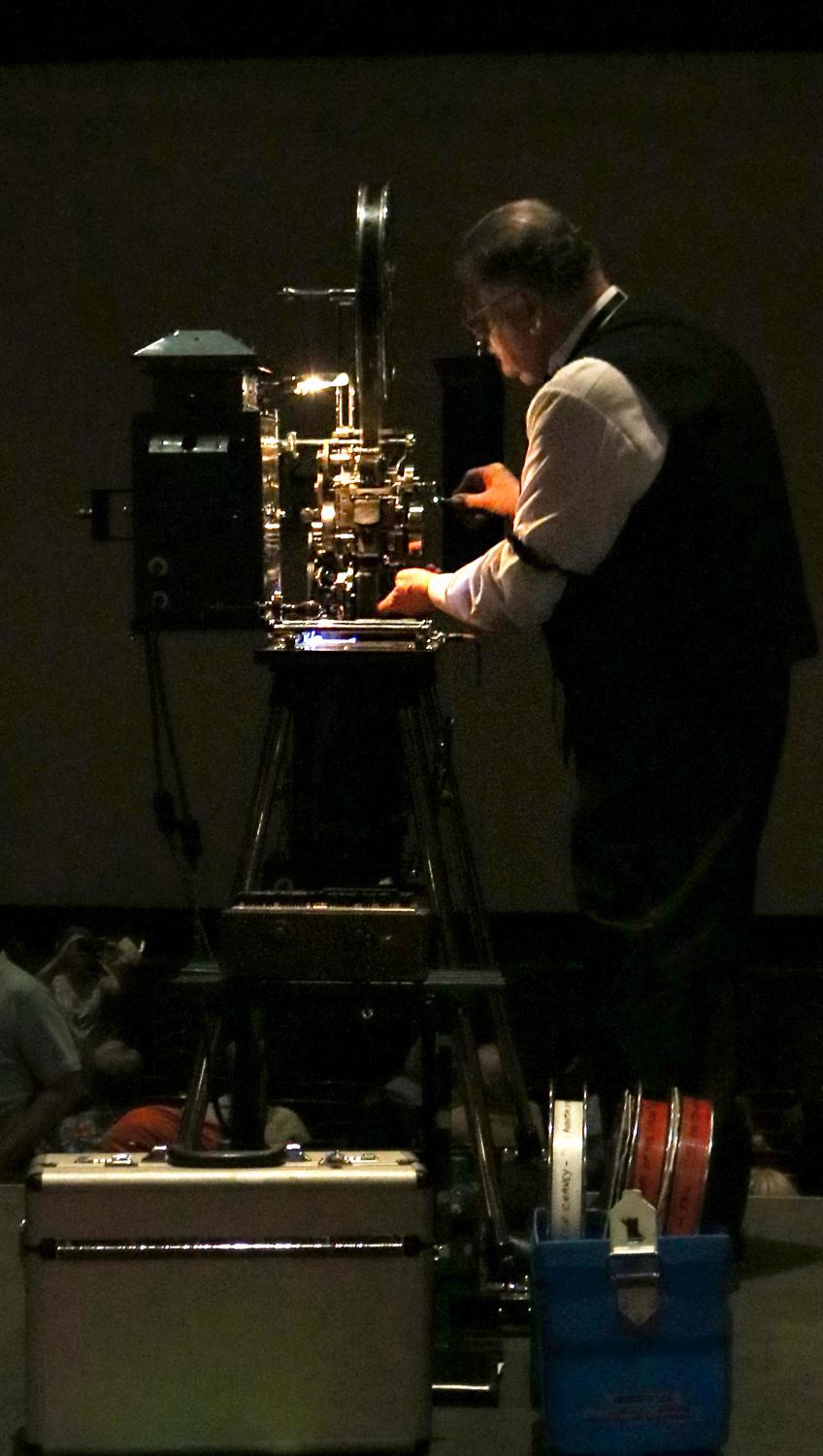
Joe Rinaudo, a silent cinema historian and preservationist, preparing his 1909 Model 6 Powers Cameragraph during intermission to show the second-half of the original 1925 silent version of ‘The Phantom of the Opera.’
Matthew Spindler, the Fox Theater manager, was the one who first suggested showing “The Phantom of the Opera” locally after seeing one of Rinaudo’s shows at the Hanford Fox Theater in Hanford, California.
“We always want to show our audience something cool and different to what is available today,” said Spindler. “Plays, shows, movies, and performances like cult classics from the 1940’s to the 1980’s are always popular, but this time I wanted people to experience something that barely exists anymore.”
Black and white silent films such as “The Phantom of the Opera,” explained Spindler, give people an idea of what it was like to experience entertainment in the past.
According to Spindler, the Fox Theater will be working to show more black and white silent films like “The Phantom of the Opera” in the future.


